Forget Space Mountain, “it’s a small world,” or Pirates of the Caribbean. Splash Mountain who? Jungle Cruise? Never heard of it. For generations of Disneyland and Magic Kingdom guests, it’s not any particular E-Ticket that makes a day at Disneyland or Magic Kingdom complete; it’s a Dole Whip. Today, this non-dairy, frozen, pineapple-flavored soft serve treat has ascended into an upper echelon of Disney Parks lifestyling, inspiring merchandise, media, and the Parks’ snack-obsessed culture.
The Dole Whip is an Instagram-ready icon; as “Disney” as Dumbo; the Zeus in Disneyland’s pantheon of must-try treats. And like the best Disney Parks classics, the story of this sweet snack is one wild ride. From Polynesian paradise to the mid-century Tiki Craze; Walt Disney’s tropical serenade to the citrus swirls of an Orange Bird and the expanded mythologies of the Tropical Hideaway, this widely-available-yet-distinctly-Disney frozen treat and its pan-Pacific story are just the in-depth explorations that our Special Features collection was made for!
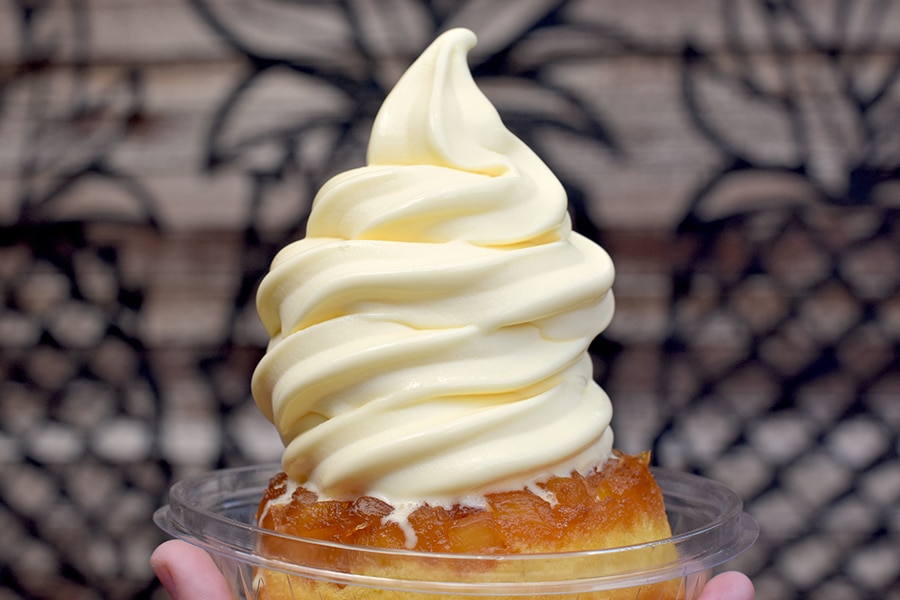
So where do we begin in our quest to uncover the story of this Adventureland anchor? Believe it or not, the Dole Whip was not an Opening Day offering at either Disneyland or Magic Kingdom… Nonetheless, the story of this tropical treat begins a long, long time before Walt Disney World… or even Walt Disney…
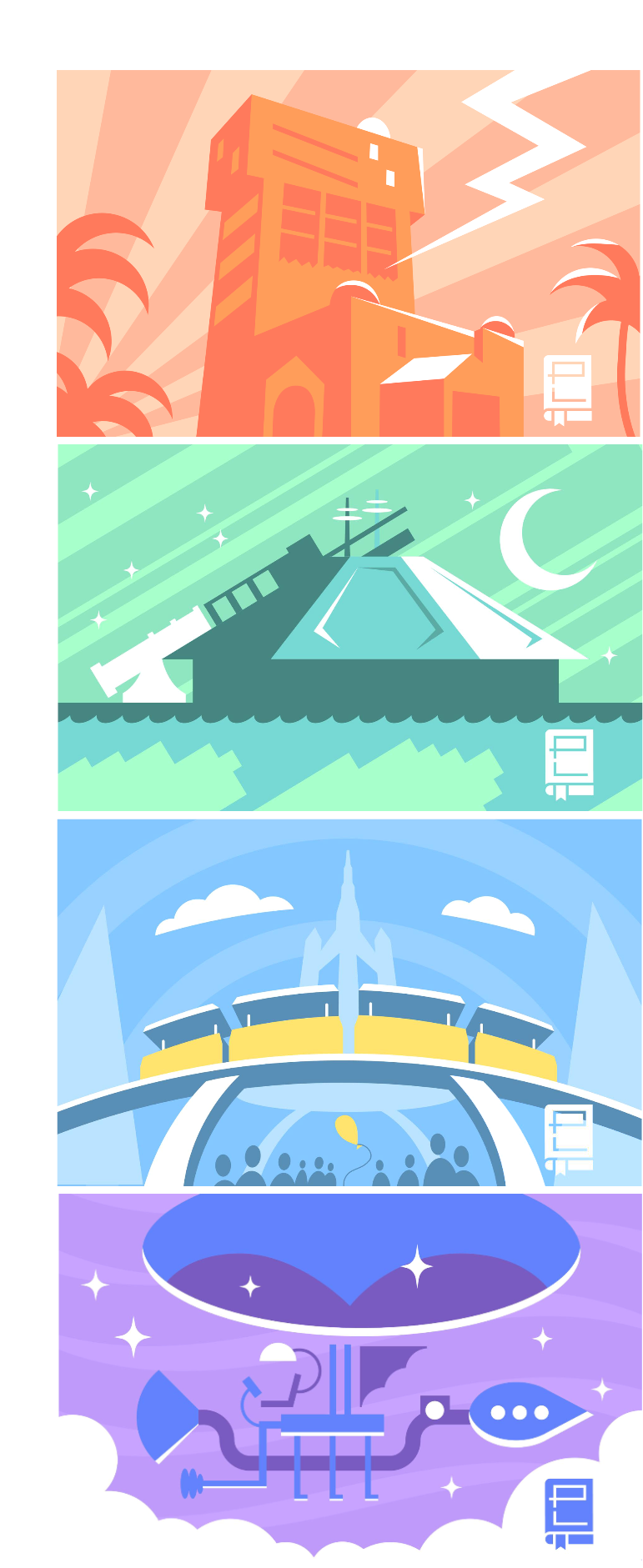
This in-depth article is just one entry in Park Lore’s one-of-a-kind Special Features collection, where we explore the threads that connect between rides, parks, and pop culture! From Imagineering’s secret Society of Explorers and Adventurers, to the history of Chuck E. Cheese; from Disney and Universal’s AVENGERS: “Custody War” to the two-part tale of animation’s rebirth in the generation-defining ’90s Disney Renaissance!
Special Features are typically available exclusively for those who support this evolving theme park history project with a monthly Membership. It’s been unlocked for a limited time, but if you enjoy what you read, consider becoming a Park Lore Member for as little as $2 / month!
In exchange for supporting Park Lore’s unique, quality-over-quantity, ad-free, and rage-free theme park storytelling, you can unlock over a hundred Member-exclusive stories in the Extra Features and Special Features collections, view rare concept art and stream attraction audio in stories, reveal Member-exclusive podcast extras, and receieve an annual member card and postcard art set in the mail! So if you enjoy this article, consider joining the story!
The Pineapple King

It was November 22, 1899 when James Dole first stepped foot on Hawaiian soil. Having sold his sailboat for $94, the fresh-faced 22-year old – six feet tall and just 120 pounds –arrived with just a suitcase and a dream… oh, and his savings of $1,500 – the equivalent of about $50,000 today.
Alright, alright, so like many self-made men, James Dole wasn’t exactly self-made. The next son in the prestigious Dole lineage that traced its roots to colonial America, James was the Harvard-educated son of the Harvard-educated, progressive, pro-women’s-suffrage, pro-Black-equality Unitarian minister and author Charles Dole.
More to the point, though, he wasn’t the first Dole to arrive in the Hawaiian islands. His father’s father’s father – patriarch Wigglesworth Dole – had fathered not only John’s grandfather, but also Daniel Dole (a missionary who established the Punahou School in Honolulu and lived out his life on the islands), who beget Sanford Dole, appointed the first President of the newly-established Republic of Hawaii after the American-assisted overthrow of the former Kingdom’s Queen Liliʻuokalani (for which the United States government has formally apologized). Sanford Dole’s role in a colonial coup d’état may seem a dark prologue to the tale of the “Pineapple King,” but his arriving first cousin-once-removed, James Dole, had a much different venture in mind.
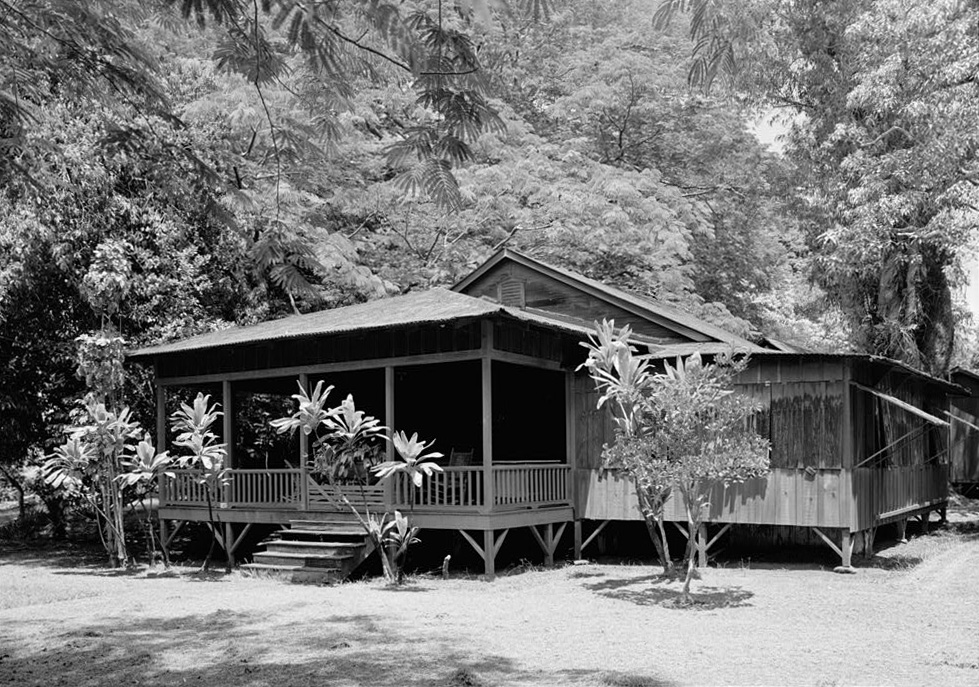
The United States’ 1898 annexation of Hawai’i had caused a massive boon to the island territory’s agricultural business (driven almost entirely by sugar) since commerce with the American mainland was no longer subject to import tariffs. So, investing every dollar he brought with him, James bought into the provisional government’s homestead offer, acquiring 64 acres of verdant Hawaiian land with a promise to farm it. He later wrote to his 1925 Harvard 25th Reunion report:
“I first came to Hawaii […] with some notion of growing coffee – the new Territorial Government was offering homestead lands to people willing to farm them – and I had heard that fortunes were being made in Hawaiian coffee. On August 1, 1900 [I] took up residence thereon as a farmer – unquestionably of the dirt variety. After some experimentation, I concluded that it was better adapted to pineapples than to [coffee,] peas, pigs or potatoes, and accordingly concentrated on that fruit.”
Dole’s turn toward the tropical fruit was seen by many as a major misstep and folly. Pineapple is highly perishable and doesn’t “travel” well, meaning efforts to ship it across the ocean as fresh fruit had repeatedly ended in abandonment. According to Richard Dole and Elizabeth Dole Porteus’ 2004 account The Story of James Dole, The Honolulu Advertiser called Dole’s endeavor “a foolhardy venture which had been tried unsuccessfully before and was sure to fail again.”
James Dole, however, didn’t plan to ship fresh pineapple at all. Though he knew little about the process, he constructed a cannery on his plantation (see Member-exclusive factory layout, above) with the purpose of canning and shipping pre-cut pineapple in a more shelf-stable and long-lasting form. Still, the Honolulu Advertiser opined, “Export on any great or profitable scale is out of the question. […] If pineapple paid, the vacant lands near the town would be covered with them….”
A Pineapple Empire
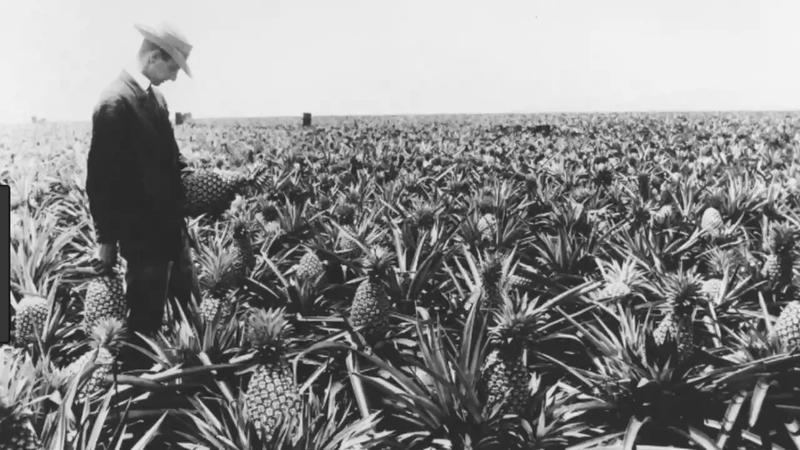
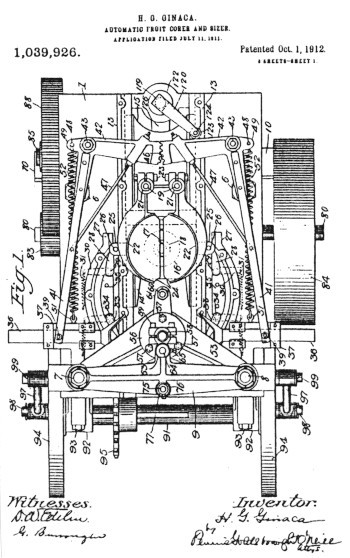
What was that about land covered in pineapples?
In 1907, Dole’s Hawaiian Pineapple Company (“HAPCO”) took out ad buys in magazines across the mainland – reportedly, the first national consumer campaign in American history. To meet increasing demand, in 1911, James comissioned American engineer Henry Gabriel Ginaca to develop a machine to speed the coring and canning process. The eventual 1913 product – the “Automatic Fruit Corer and Sizer” – more-than-doubled the plantation’s output from 15 pineapples per minute to 35. Characteristic of the progressive Dole and his Unitarian upbringing, rather than using the invention to put native Hawaiian farmers out of business, he sold his competitors Ginaca machines at modest prices. Dole asserted that a company must first and foremost stick to its civic duties, and that HAPCO’s duty was bolstering the economy of Hawai’i and bettering the lives of its people.
One of the few remaining obstacles hemming in Dole’s ambitions was Hawaii’s relative disconnect from the United States, accessible only via a two-week long ship ride. In 1927, inspired by Charles Lindbergh’s 3,600 mile trans-Atlantic solo flight, James Dole officially announced the Dole Air Race. Out of his own pocket, he financed a $25,000 grand prize (worth about $350,000 today) and $10,000 second prize for the crews of the first two planes to successfully fly from Oakland, California to Honolulu, Hawai’i – a 2,400 mile trip.
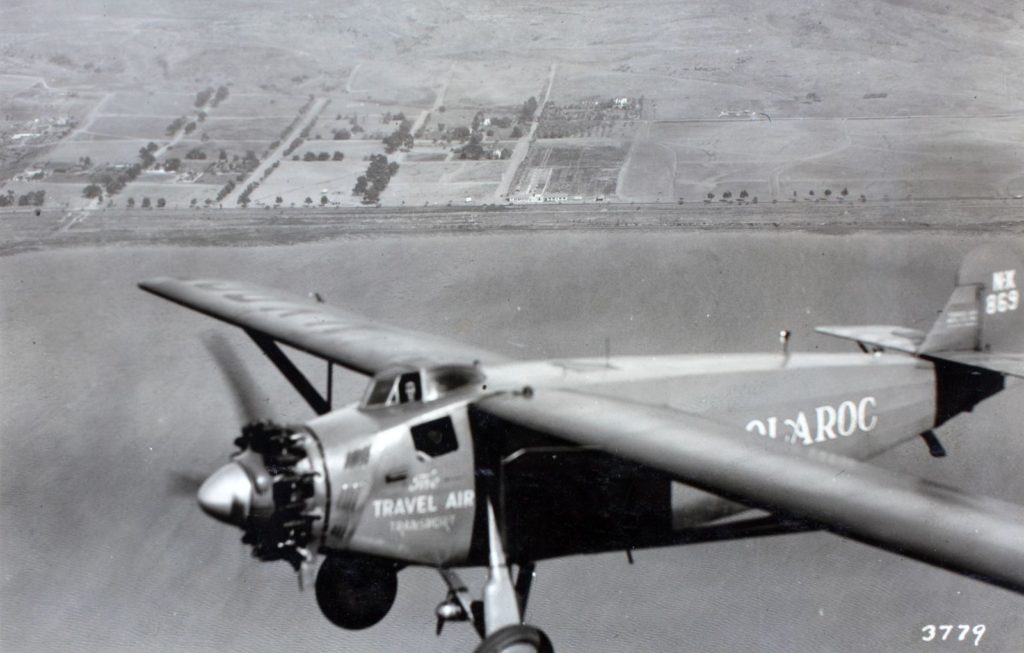
Ultimately, eight pilot / navigator pairs departed on August 16, 1927. Of them, two turned back, two crashed, two disappeared, and two finished – the Woolaroc (after a 26 hour flight) and the Aloha (two hours later). Deeply distraught over the two lost pilots, Dole personally offered a $20,000 reward for their discovery, but neither was ever found. Still, the Woolaroc‘s navigator, William Davis, reported after: “We know now that flying is a practical means of transportation across the Pacific. All that is necessary is a popular demand for this speedy transportation.”
In January 1935, Amelia Earhart completed the first solo flight from the United States mainland to Hawaii. The very next year, Pan American Airways established a trans-Pacific route from San Francisco to Manila, Phillippines via a stop in Hawaii. Though it was still early, this much was clear: Hawai’i was well on its way to being connected.
By the early 1930s, Dole’s Hawaiian Pineapple Company had over one billion pineapple plantings, and was manufacturing 105 million cans of pineapple per year. But improving mechanization, farming, and air transportation lowered the price of pineapples, putting HAPCO in a vulnerable position during the Great Depression and leading to James Dole’s ousting.

James Dole’s company was purchased by another Hawaiian agriculture outfit, Castle & Cooke (though it retained its own indentity under the new parent company). The further story of Dole is, as one might imagine, one of 20th century corporate buy-outs, expansions, acquisitions, and rebrandings.
Though James Dole himself passed away on March 20, 1958 in Honolulu, by the end of his life, his dream had very nearly been realized: the pineapple had become as ubiquitous in American supermarkets as apples, oranges, and bananas. Still, even as Dole’s Hawaiian operations were evolving, the beginnings of a tropical fascination were taking root back in the continental United States…
The Tiki Wave
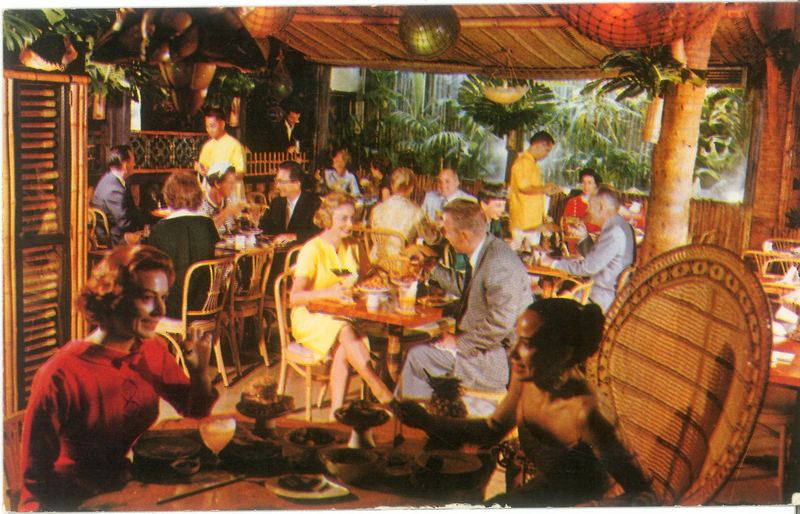
Back on the mainland, the beginnings of a shared interest in the culture and cuisine of the South Seas had begun in earnest back in the 1930s. In no small part, the introduction of Polynesian pop culture began with the 1934 opening of Hollywood, California’s “Don The Beachcomber” – the prototypical “Tiki bar” from which dozens of others sprung, including friendly competition via Victor Bergeron’s Trader Vic’s. It was often hard to know if such bars’ enigmatic owners were being honest about their adventures in the “Exotic Orient,” but their intricate tales and theatrical personas were half the fun.
When American soldiers returned from the Pacific theater after World War II, they brought with them stories and souvenirs of the Pacific Islands, each layered upon the popular images established by Hollywood’s Tiki bars – which in turn served as a kind of friendly escapism for returning Veterans.
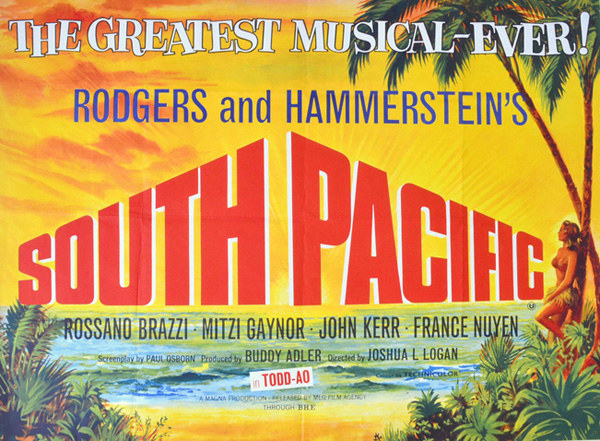
Thor Heyerdahl’s 1947 Kon-Tiki Expedition (and his best-selling 1950 book, Kon-Tiki) inspired an Academy Award-winning documentary film of the same name, shedding light on the otherwise-mysterious cultures and customs of a tropical region never before seen on film. At the same time, author James Michener won the 1948 Pulitzer Prize for his Tales of the South Pacific short stories collection, which in turn inspired Rogers & Hammerstein’s 1949 musical, “South Pacific”(and later, a 1958 big screen adaptation).
Meanwhile, thanks to the G.I. Bill, post-War America was undergoing a mid-century, middle-class explosion. Two-income households found themselves awash in the once-unthinkable concepts of expendable income, leisure time, and affordable civilian air travel. The country’s booming airlines began an aggressive push to install routes to that far-flung U.S. territory of Hawaii – the dreamy, tropical land where sweet and exotic pineapples grew. Is it any surprise that in 1950, Dole itself installed a tourist-friendly fruit stand on James’ original pineapple fields, selling fresh fruit spears and juices?
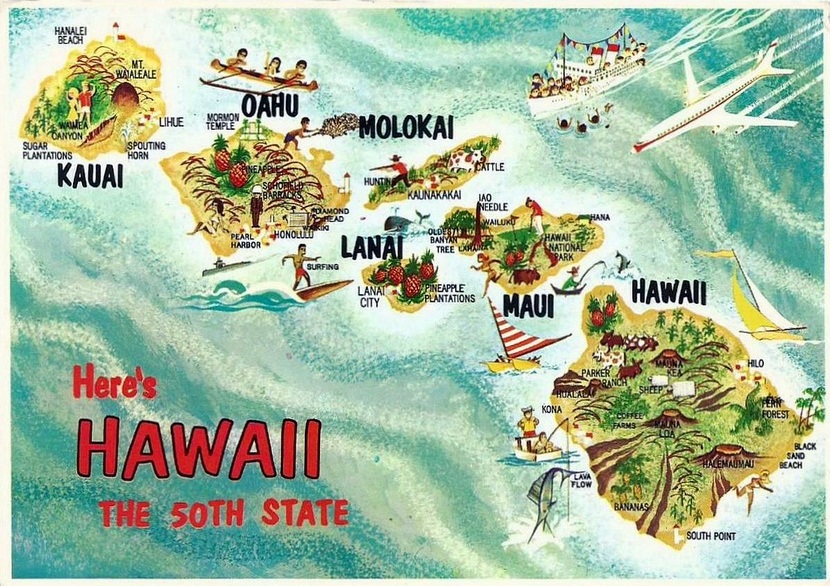
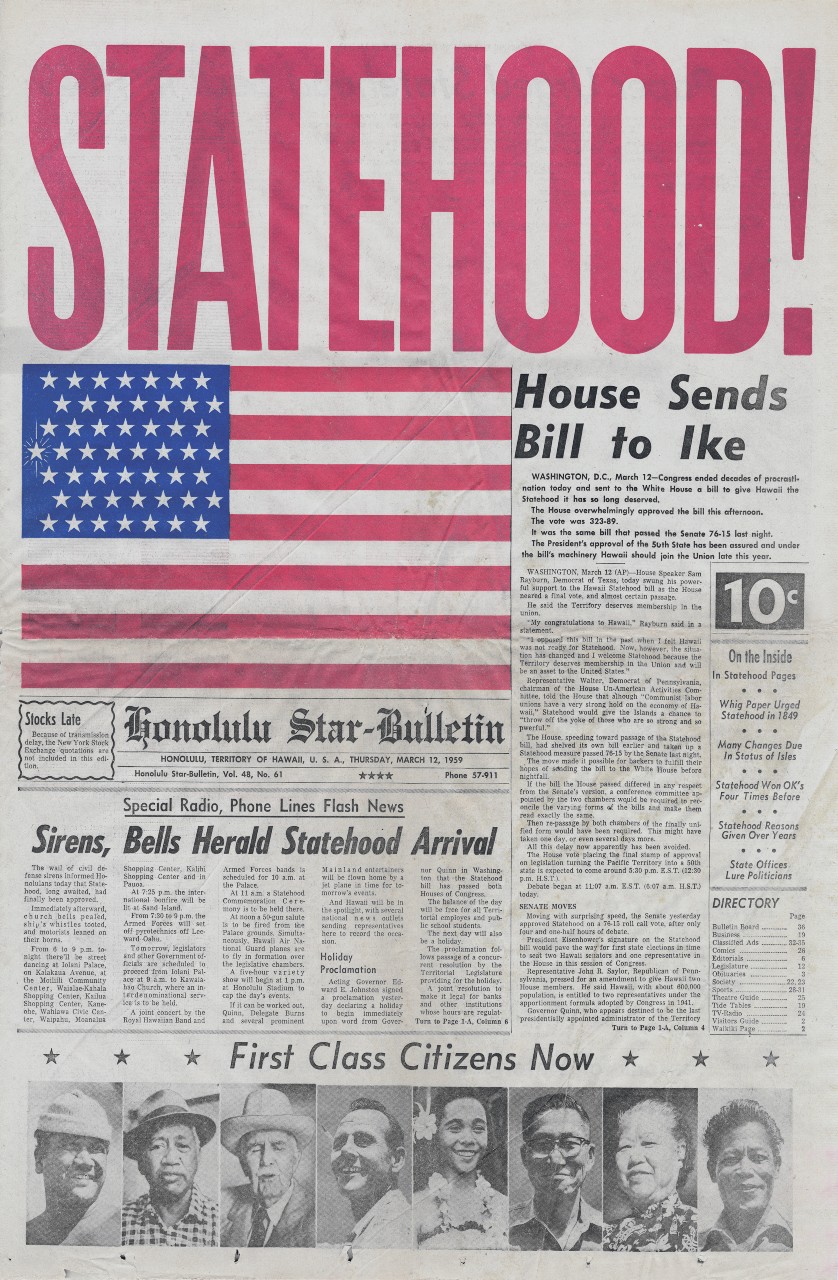
On March 18, 1959 (coincidentally, almost exactly one year to the day after the death of James Dole) President Dwight D. Eisenhower signed into law the Admission Act, dissolving the U.S. Territory of Hawaii and legally replacing it with the State of Hawaii. (In a referendum that June, 94.3% of Hawaiian residents voted in favor of statehood.) On August 21, 1959, its status was cemented. Hawaii became the 50th (and to date, most recent) state added to the United States of America.
As never before, a wave of tropical style overtook the mainland. A swirling vortex of exoticism, patriotism, colonialism, expansionism, and good old fashioned cultural appropriation, the distant South Seas archipelago of Hawai’i had at last been transformed into an accessible domestic vacation hotspot, equal parts America and Adventureland.
Though the end of the 1950s, countless Tiki bars swept across the country, underscored by a whole new genre of pop music called “exotica” (exemplified by Martin Denny’s 1957 album Exotica and Arthur Lyman’s 1958 Taboo) that merged the sounds of the islands with lounge standards.

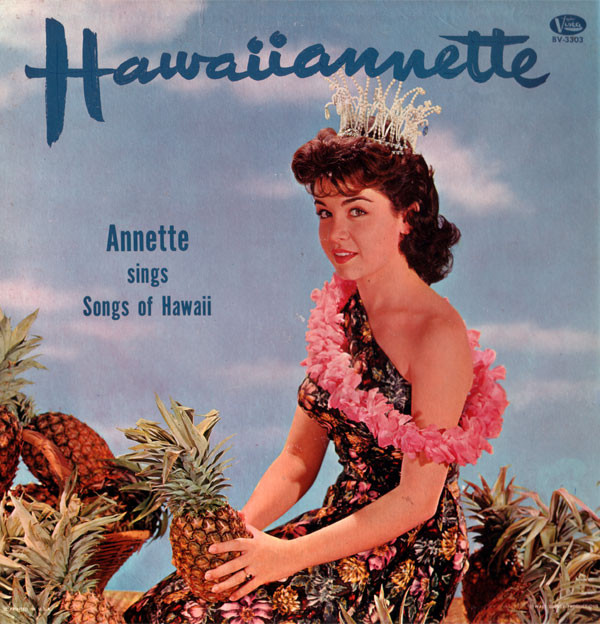
In the summer of 1960, Mickey Mouse Club alum Annette Funicello released “Pineapple Princess” – the lead single off her LP “Hawaiianette” (streamable above for Silver, Gold, and Platinum Members). The radio hit was written and composed by Disney’s go-to songwriters Richard & Robert Sherman (songwriters behind “The Tiki Tiki Tiki Room,” “There’s a Great Big Beautiful Tomorrow,” “One Little Spark,” “Miracles from Molecules,” “It’s a Small World,” and many more). Just like that, surf culture had become American culture. The Beach Boys brought surf rock to the masses while Gilligan’s Island set television records.
As a rapid urbanization overtook the islands, the mid-century mainland was awash in rattan furniture, Tiki torches, rum cocktails, floral leis, vibrant prints, sandals, Aloha shirts, mai tais, palm leaves, exotic punches, tropical birds, roasted pigs, luaus… and, at last, pineapple. Read on…



